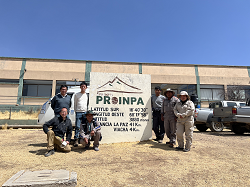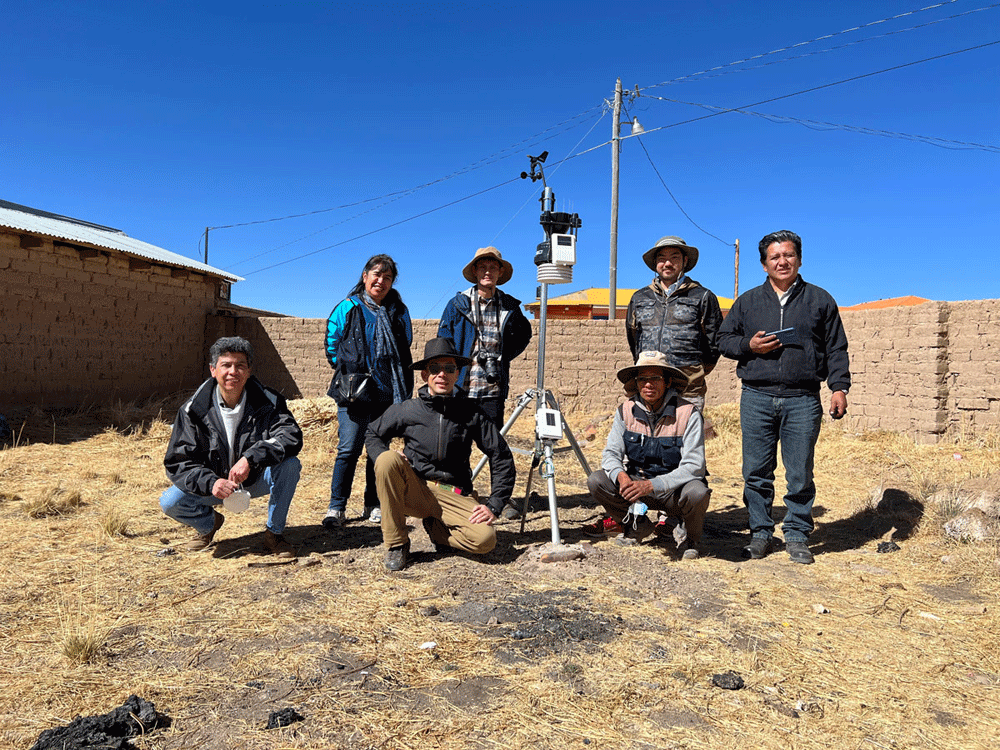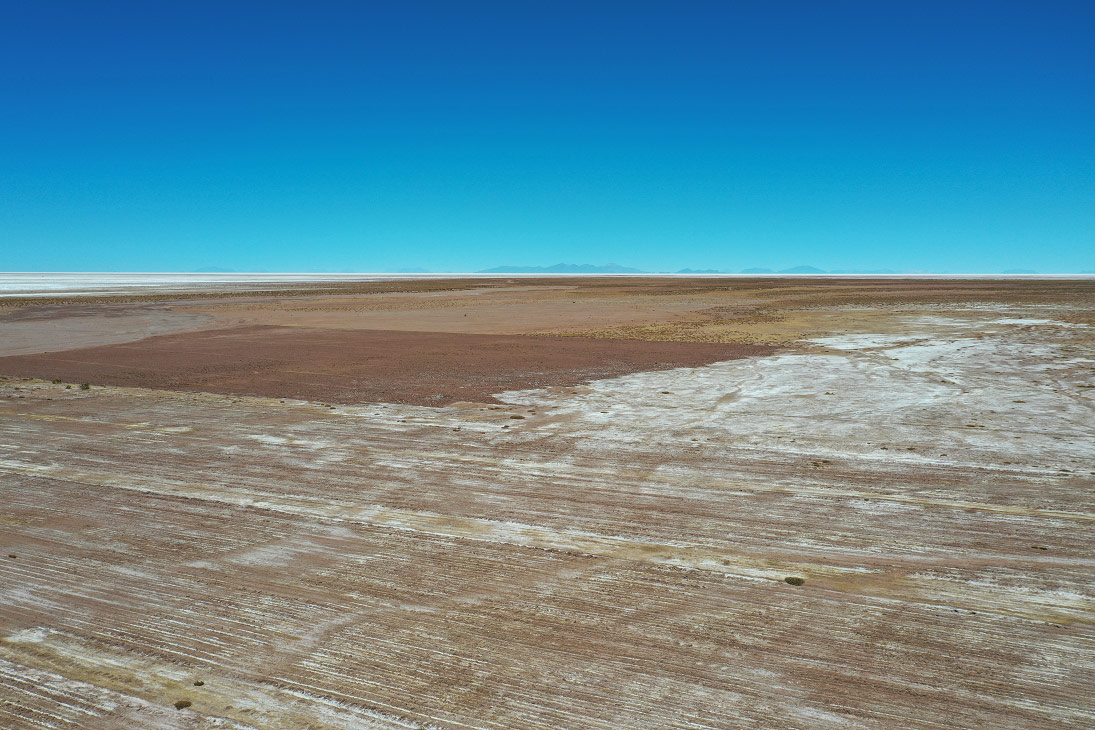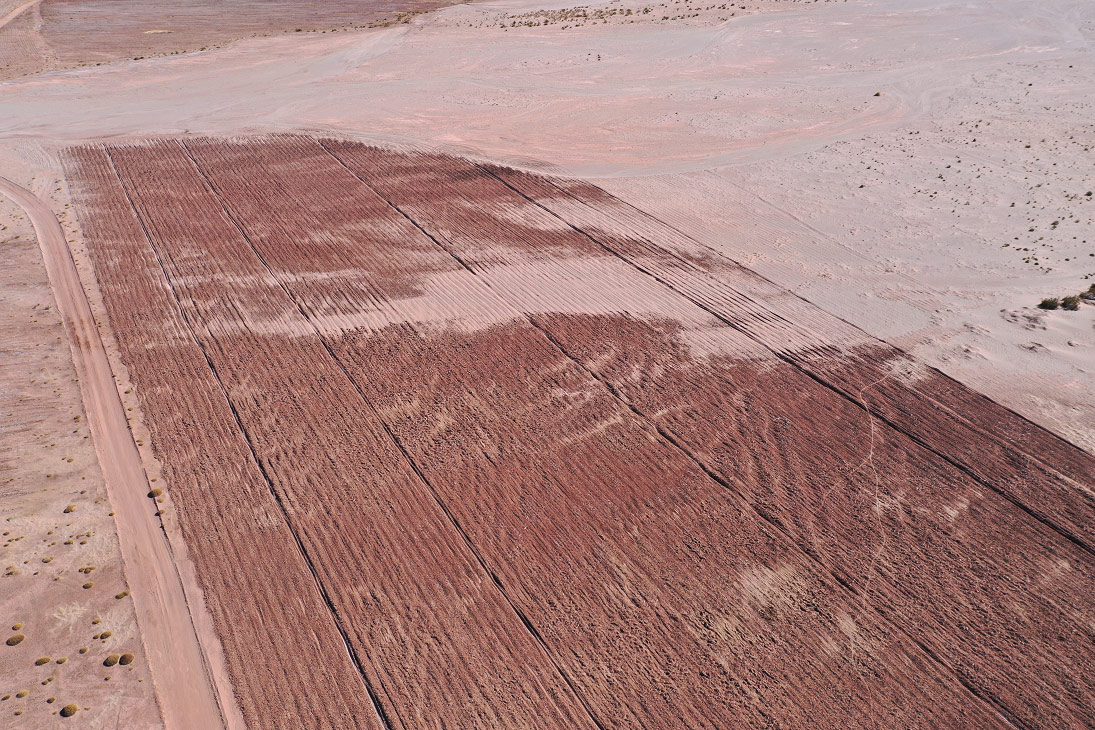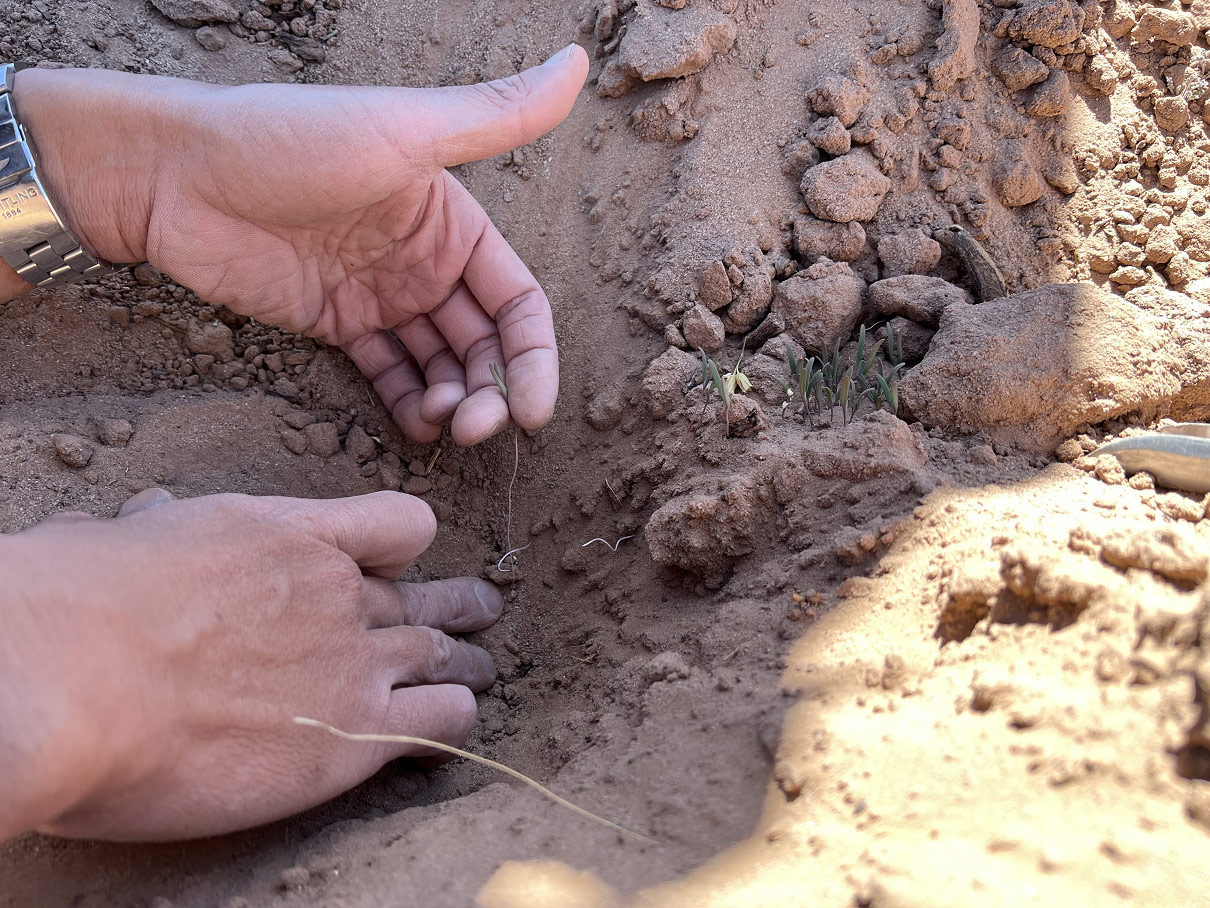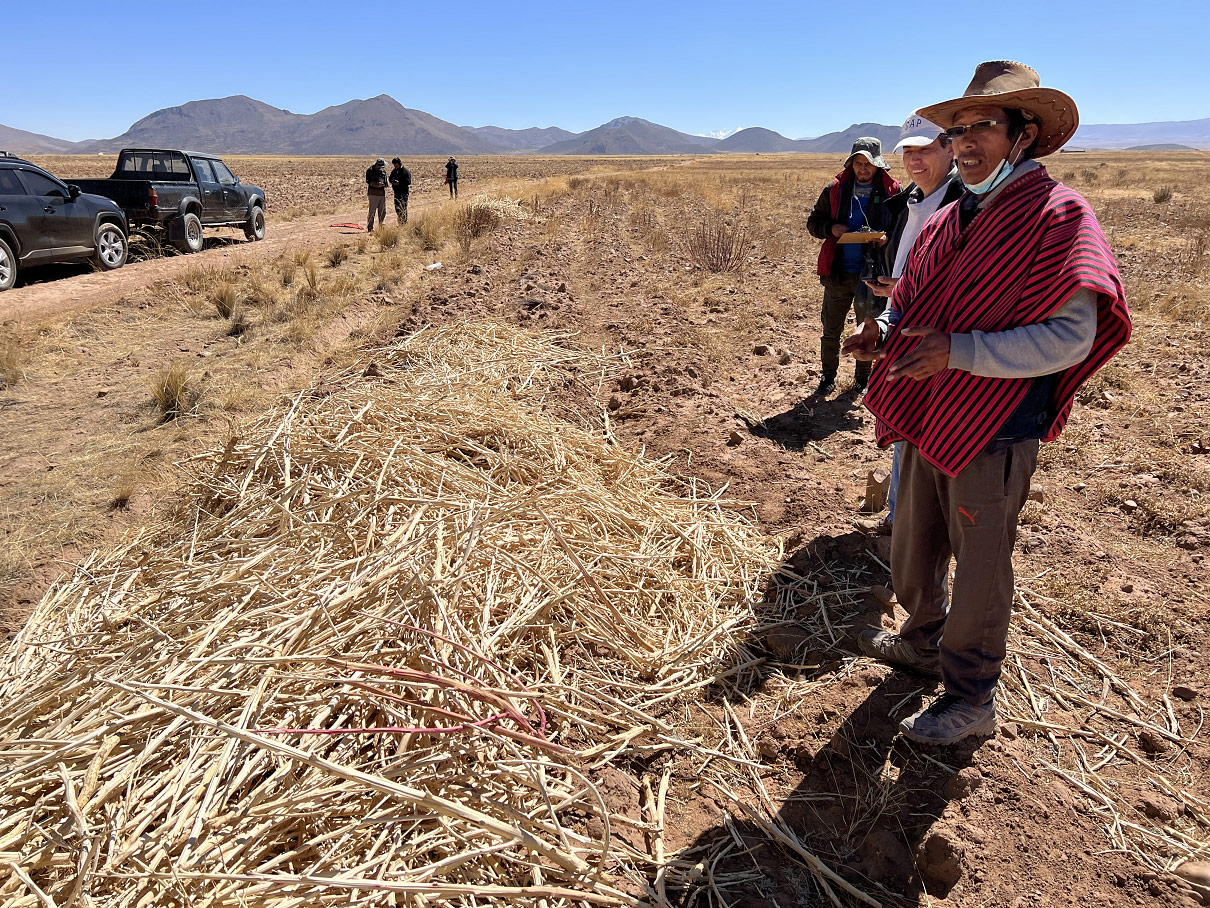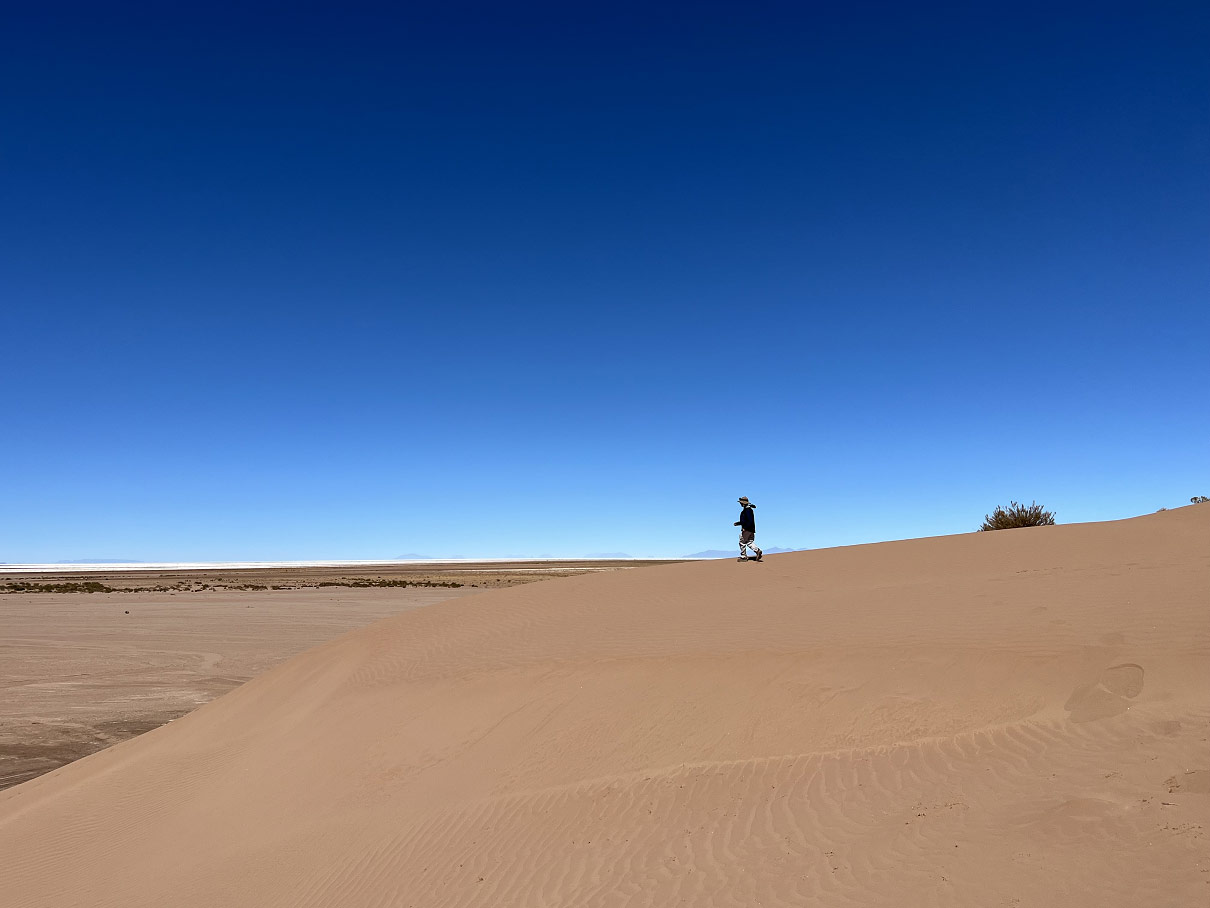2022.9. Bolivia Business Trip Report
Subject 3: "Development of cropping system for sustainable quinoa production" Establishment of research implementation infrastructure for the start of field research and field trials
At the start of the local technology transfer for the SATREPS Bolivia project "Strengthening of Resilience in Arid Agro-Ecosystems Vulnerable to Climate Change, Through Research on Plant Resources and Technological Applications", Associate Professor Keisuke Katsura of TUAT and JIRCAS Research Fellow Kenichiro Fujii held a meeting with the Bolivian counterpart institutions, the Universidad de San Andrés (UMSA) and the Andean Agricultural Research and Extension Institute (PROINPA). They confirmed the progress of the project and discussed future plans in details. The overland trip from La Paz to Uyuni was also used to study the evolution of the quinoa cropping system, and in Uyuni, suitable plots were found for a marginal study of quinoa cultivation.
Preparation of Quinoa Cultivation@Estancia Jarma 2022.9
Quinoa planting plots @Uyuni Salt Lake 2022.9.
Quinoa germinated in a field near Uyuni Salt Lake 2022.9
Around Uyuni Salt Lake, the fields are cut into rows and dozens of quinoa seeds are sown between the rows, 10-15 cm deep underground. Because of the severe drought in this area, it is necessary to sow deeply to avoid drought. It is surprising that quinoa seeds can germinate at such depths, since the largest seeds are only about 2 mm in diameter. However, unstable precipitation and sand burial often prevent germination, and this is the biggest problem that plagues farmers. Many farmers have to reseed their quinoa due to poor germination. Stabilization of germination is a very important issue for stable and high yields of quinoa.
